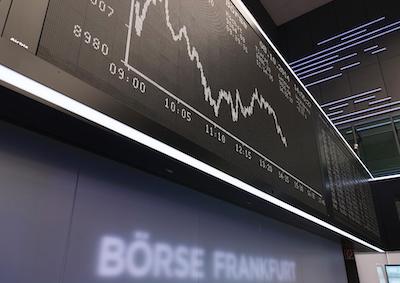The recovery in global markets during November tempted UK investors back into stock and bond funds for the first time in months, according to the latest Fund Flow Index from Calastone, the largest global funds network.
However, the confidence is fragile and buying was selective, with investors favouring “safe-haven” money markets over both equities and bonds.
Equity funds saw £449 million of inflows in November, following six months of net selling.
About £4.54 billion had been withdrawn from equity funds between May and October.
Emerging market funds saw record inflows, and North American, global and Japanese funds all enjoyed investor buying, but Asia-Pacific, Europe, UK, income funds and infrastructure all suffered outflows.
In unloved UK equities, outflows reduced to £330 million in November, their best reading since March 2023 –but it was still the 30th consecutive month that saw investors withdraw capital from London shares.
ESG equity fund outflows in November (£524 million) reached seven consecutive months.
Investors added a record £414 million to emerging markets funds in November, and have now been net buyers for 14 months in a row.
Continued strength in the US economy, with rapid GDP growth and falling inflation, drove £481 million of new capital into North American equity funds, their best month since June 2022 and their sixth best on Calastone’s record.
Global funds also remained in favour, attracting £802 million of new cash in November. Japanese funds saw inflows of £111 million.
Outflows from Asia-Pacific funds accelerated to their second highest level on record — a net £229 million during November.
Sector funds had their worst ever month with outflows of £296 million, driven mainly by selling of infrastructure funds.
Edward Glyn, head of global markets at Calastone, said: “Investors are intent on both trying to plot the likely path central banks will take with short-term interest rates and on how much risk to price into longer-term bonds.
“This in turn determines both their assessment of how the economy is going to fare and their calculations for asset prices of all kinds.
“November saw good news on inflation in the US, the UK and in Europe which investors increasingly hope will stay the hand of policy makers deciding on the next move for rates.
“Inflows to fixed income reflect investors trying to lock into yields at 15-year highs and hoping for capital gains from here on.
“Perkier bond markets are good for equities too. Equity prices duly rebounded during the month, pushing the global index within a whisker of its high point for the year.
“This has tempted investors back into equity funds, favouring those parts of the world with better growth characteristics, like the US, and those that benefit when US interest rates start to fall, like emerging markets.
“The surge in interest in Japanese equity funds reflects the flurry of excitement that Japan may finally be shrugging off its long stagnation. Regions like Europe, Asia and the UK, which are suffering a weaker outlook remain out of favour.
“But it’s clear investors are very cautious. There is a lot of concern that higher interest rates have not yet taken their full effect to suppress demand, which would impact company profits and therefore share prices.
“And of course, the returns on low-risk cash-focused money market funds are now better than at any time since the GFC, providing an attractive alternative magnet for nervous investors – with inflation falling, these returns are even turning positive in real terms now too.”
On ESG funds, Glyn said: “The FCA is now taking action to counter allegations of greenwashing in the ESG sector, but investors are way ahead of them – they have been voting with their feet for seven months now by selling down ESG funds.
“The FCA’s action is likely to cast a further pall over the sector in the months ahead, however, and we will be monitoring the extent to which fund flows react.”
